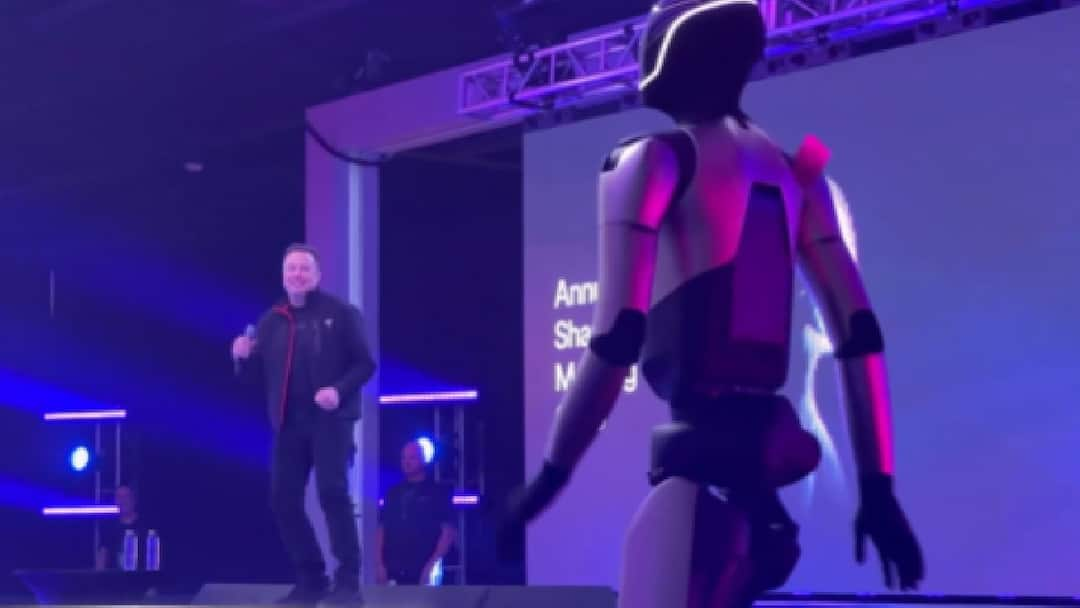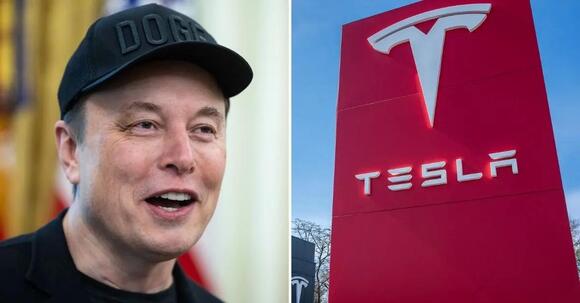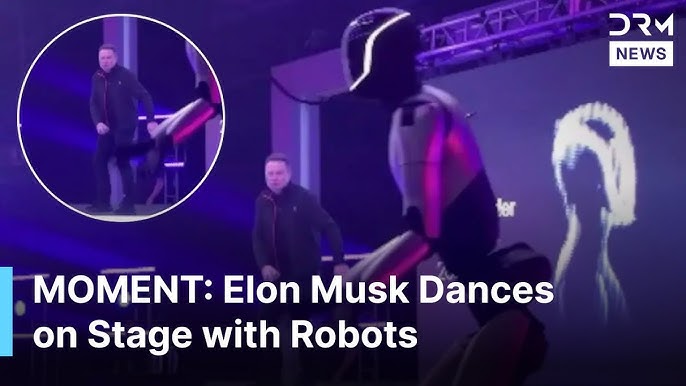LDL. 🔥 Elon Musk Takes the Stage With Robots as Tesla Shareholders Approve $1 Trillion Payday
In what may go down as one of the most surreal moments in corporate history, Elon Musk stood on stage at Tesla’s annual shareholder meeting in Austin, Texas, flanked by life-size humanoid robots, before winning shareholder approval of a pay package potentially worth up to $1 trillion.What looked like a spectacle—a staged moment of flash and futurism—also masked deep questions about governance, value creation and Musk’s central role at Tesla.

A Stage Set for Future Tech and Big Numbers
When Musk took the stage, he didn’t begin with typical key-note platitudes about electric vehicles and battery innovation. Instead, the lights dropped, the robots moved, and the message felt part choreographed, part corporate ritual. Analysts described the moment as both a celebration and a high-stakes bet.

According to press reports, shareholders voted with over75 % in favor of the pay plan, signalling a strong endorsement of Musk’s leadership and Tesla’s strategic direction. The new incentive plan ties Musk’s rewards to ambitious performance milestones: delivering tens of millions of vehicles, rolling out robotaxi services, producing millions of humanoid robots, and lifting Tesla’s market value to as high as $8.5 trillion.
On stage, Musk said:
What we’re about to embark upon is not merely a new chapter of the future of Tesla but a whole new book.”
And with that backdrop of robots dancing, the message felt almost theatrical—but the implications are far from entertainment.

Why the Pay Package Is so Extraordinary
To put things in context: while many CEO compensation packages run into the tens or hundreds of millions of dollars, this plan sets a new benchmark—up to $1 trillion in stock value over the next decade if all conditions are met. It is contingent, meaning Musk doesn’t get paid that amount immediately—it hinges on Tesla hitting milestone after milestone.
For example:

Tesla must grow its market cap dramatically—from around $1.5 trillion today to up to $8.5 trillion over 10 years.
Operational targets: launching robotaxi fleets, manufacturing humanoid robots, delivering huge numbers of vehicles and full-self-driving subscriptions.

Musk’s equity stake and voting control would also increase significantly if the plan pays out.
Thus, the package is less a “salary” and more a mega-incentive bet on Tesla’s future direction—namely, robotics and AI, not just cars.
Dancing Robots & Symbolism: More Than Just a Gimmick?
The robots on stage weren’t just props. They served as visual shorthand for Tesla’s pivot—or at least aspiration—into humanoid robotics and AI, beyond electric vehicles. Musk’s decision to walk out with them, dancing alongside them, conveyed a message: Tesla’s future is not only about EVs, but about robotics, autonomy and broader transformation.
Media outlets picked up on this, noting the spectacle. One source wrote that Musk, flanked by the robots, declared the moment as “sick” and clearly intended it to signal more than just a vote tally. For critics, the robot choreography was emblematic of the grandiosity—and risk—embedded in the pay plan.

Voices of Support and Concern
Many shareholders and industry supporters defended the plan as necessary to retain Musk. They argued that losing him would threaten Tesla’s trajectory, given his outsized role in the company’s identity and strategy. Tesla’s board made clear that, without this incentive, Musk might shift his focus elsewhere.

But not everyone is convinced. A coalition of institutional investors, including some unions and pension funds, had actively campaigned against the plan before the vote. Their concerns:

The size of the potential payout is unprecedented.
The performance targets, while high, may not be aggressive enough given Tesla’s history of ambitious promises.
The increased consolidation of control by Musk raises corporate governance red flags.
This tension between support and skepticism underscores the difficult trade-offs at play: innovation risk vs. accountability, big vision vs. measurable outcomes.

Tesla’s Strategic Shift: Cars to Robots
One of the most interesting aspects of this vote is the clear signal that Tesla’s future narrative now extends far beyond traditional vehicle manufacturing. The pay package is explicitly tied to milestones in robotics and autonomy, suggesting Musk is betting Tesla will become a leading force in the next industrial wave.

For example:
The “Optimus” humanoid robot has been prominently featured in Tesla’s presentations.
The robotaxi ambition has been reiterated: fleets of Tesla vehicles operating autonomously, generating revenue beyond individual car sales.
Musk himself referenced a “robot army” in internal comments, linking this pay package to broader ambitions.

Thus, the dancing robots may have been more than spectacle—they were part of the story energy Tesla wanted to sell to investors.
Risks and Realities: What Could Go Wrong
With the upside so large, the risks loom equally significant. Some of the key risks include:
Execution risk: Hitting milestones like market cap of $8.5 trillion or delivery of 20 million vehicles are massive undertakings, especially given rising global competition.
Dilution risk: Issuing large amounts of stock to Musk could dilute existing shareholders’ equity and raise concerns about governance.
Focus risk: Musk currently runs multiple major ventures (SpaceX, xAI, Neuralink). Critics argue his attention may be divided.
Credibility risk: Tesla has in the past promised lofty targets around autonomy and robotics which have been delayed. Failure to deliver may erode investor trust.
If one or more of these risks materialize, the pay plan could become a symbol of overreach rather than visionary strategy.

Corporate governance experts have raised questions over the implications of this vote. By increasing Musk’s stake and control, Tesla’s board is consolidating power in the hands of its CEO, potentially reducing checks and balances. Some observers also note that Tesla moved its state of incorporation from Delaware to Texas—a strategic choice that may limit certain shareholder protections.

For shareholders, the vote may reflect a belief that Musk is irreplaceable, but it also underscores a move toward centralizing authority in one individual—a departure from more distributed corporate governance models.
The Cultural Moment: Tech, Ambition, and Symbolism
Beyond finance and governance, there’s something culturally potent about this moment. A man who once founded or led multiple cutting-edge companies—cars, rockets, brain–machine interfaces—now receives granting authority via a spectacle of dancing robots and trillion-dollar pay. It’s a blur of ambition, futuristic promise and performative display.

Some cultural commentators see it as emblematic of the modern tech age: where spectacle meets strategy, where CEOs are not just executives but storytellers, and where “disruption” has become a performance genre.What Comes Next?
With the vote behind them, Tesla faces the long haul: turning vision into reality. Over the next decade the company must deliver on the milestones embedded in Musk’s pay plan. For shareholders, that means watching not just quarterly earnings but also robot production lines, robotaxi launches, autonomy deployments—and whether the brand can sustain momentum.
Musk, meanwhile, must juggle not only Tesla’s legacy as an electric vehicle pioneer but also its ambitious pivot into robotics and AI. His actions over the coming years will either validate the gamble or turn it into a cautionary tale.
https://www.youtube.com/embed/xjqSW4n1R6Q?feature=oembed
Final Take
Elon Musk’s unveiling on stage of dancing robots and the historic $1 trillion pay package approval encapsulate a moment of boldness, optimism—and risk. Shareholders voted yes, betting that the future Musk sees is the future they want. But downstream lies the real test: whether Tesla can transform from a carmaker into a robotics power, and whether that transformation is worth the cost.
